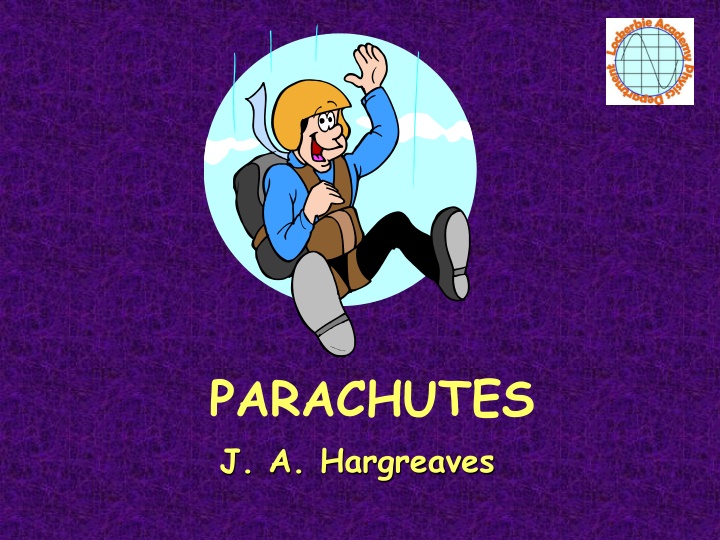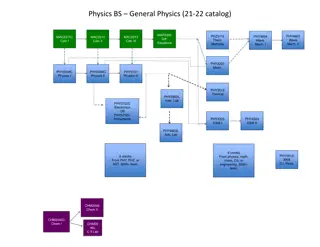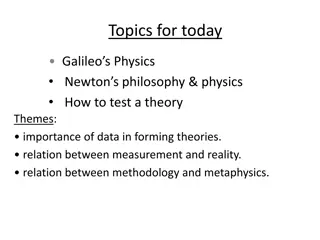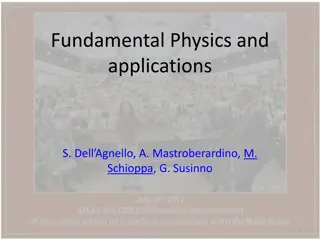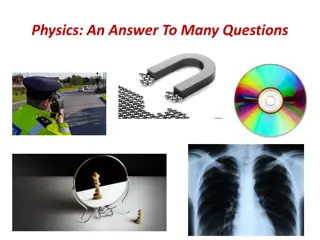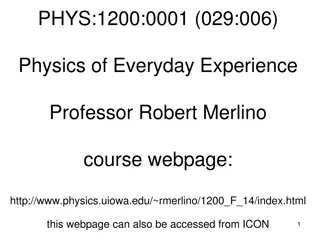Physics of Parachute Jumping
Physics behind parachute jumping, from the moment the parachutist leaves the plane to reaching terminal velocity. Explore how forces like weight and air resistance impact the descent, leading to a safe landing. Discover why opening the parachute affects the motion and how forces balance out during the descent phase. Learn about the deceleration process and the role of air resistance as the parachutist prepares for landing.
Download Presentation

Please find below an Image/Link to download the presentation.
The content on the website is provided AS IS for your information and personal use only. It may not be sold, licensed, or shared on other websites without obtaining consent from the author.If you encounter any issues during the download, it is possible that the publisher has removed the file from their server.
You are allowed to download the files provided on this website for personal or commercial use, subject to the condition that they are used lawfully. All files are the property of their respective owners.
The content on the website is provided AS IS for your information and personal use only. It may not be sold, licensed, or shared on other websites without obtaining consent from the author.
E N D
Presentation Transcript
PARACHUTES J. A. Hargreaves
The Physics of Motion during a parachute jump! Is it all it is cracked up to be?
The instant the parachutist leaves the plane his vertical speed is zero! Friction is zero There is a force acting downwards -WEIGHT The weight is an unbalanced force on the parachutist The parachutist accelerates downwards according to Fw=ma. W The parachutist accelerates at 9.8 ms-2
F As the parachutist falls his speed increase AIR RESISTANCE/ DRAG increases WEIGHT remains constant There is still an unbalanced force on the parachutists but this is less than before. The parachutist accelerates downwards but the acceleration is much less than 9.8 ms-2 Fun W The parachutist does not slow down but speeds up slower!
F Finally the magnitude of the AIR RESISTANCE is equal to WEIGHT The forces on the parachutist are now BALANCED (overall effect ZERO) The parachutist travels at CONSTANT VELOCITY (acceleration is zero) The parachutist travels at TERMINAL VELOCITY W
F As the parachute opens AIR RESISTANCE/ DRAG INCREASES WEIGHT remains constant AIR RESISTANCE>>WEIGHT There is an unbalanced force on the parachutist upwards The parachutist decelerates (slows down very quickly) Fun W
IT IS TRUE THAT YOU GO UPWARDS WHEN YOU OPEN YOUR PARACHUTE WHY DOES IT LOOK LIKE THAT ON THE TV? The CAMERA MAN hasn t opened his parachute yet! So he will be falling faster than the parachutist and will have to raise his camera up.
F As the parachutist slows down AIR RESISTANCE DECREASES until is equal to the weight The forces on the parachutist are now BALANCED (overall effect ZERO) The parachutist travels at CONSTANT SPEED (acceleration is zero) The parachutist travels at a new TERMINAL VELOCITY (obviously less than before but still enough to break a leg on impact!) W
Fg As the parachutist lands WEIGHT remains constant but there is a very big force from the ground There is an unbalanced force on the parachutist upwards The parachutist decelerates to a stop! Fun PHEW! W
http://www.darvill.clara.net/enforcemot/friction.htm http://www.physicsclassroom.com/mmedia/newtlaws/sd.cfm
